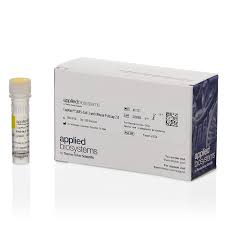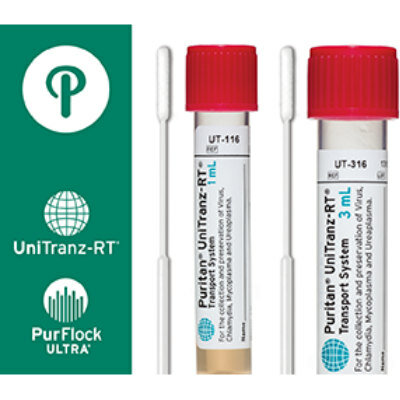Thermo Fisher Launches CE-IVD Marked Next-Generation TaqPath COVID-19 RNase P 2.0 Assay Kit
|
By LabMedica International staff writers Posted on 27 Oct 2021 |

TaqPath COVID-19 RNase P 2.0 kit
Thermo Fisher Scientific Inc. (Waltham, MA, USA) has launched the CE-IVD marked TaqPath COVID-19 RNase P 2.0 kit, a newly designed test that provides accurate results by compensating for current and future COVID-19 viral mutations.
The kit has been redesigned to detect active SARS-CoV-2 infections by identifying the presence of any one of eight gene targets from the virus. By surveying across multiple genes, the test can net accurate results even as mutations shift the genes they express. The TaqPath COVID-19 RNase P 2.0 kit uses an RNase P control to ensure sample integrity, quality and extraction.
The TaqPath COVID-19 RNase P 2.0 kit uses a newly designed assay to assess nasopharyngeal and nasal swab samples to detect active COVID-19 cases. The test has a turnaround time of about three hours. The first-generation test, TaqPath COVID-19 CE-IVD RT PCR Kit, has been available with a CE-IVD mark since March 2020.
"SARS-CoV-2 is continuing to mutate, and this assay is the latest in our efforts to make sure our tests are future proofed against those variants," said Manoj Gandhi, senior medical director for genetic testing solutions, Thermo Fisher Scientific. "With this product, we are offering customers the next generation of our COVID-19 diagnostic test that has inbuilt checks and balances in the face of emerging variants."
The kit has been redesigned to detect active SARS-CoV-2 infections by identifying the presence of any one of eight gene targets from the virus. By surveying across multiple genes, the test can net accurate results even as mutations shift the genes they express. The TaqPath COVID-19 RNase P 2.0 kit uses an RNase P control to ensure sample integrity, quality and extraction.
The TaqPath COVID-19 RNase P 2.0 kit uses a newly designed assay to assess nasopharyngeal and nasal swab samples to detect active COVID-19 cases. The test has a turnaround time of about three hours. The first-generation test, TaqPath COVID-19 CE-IVD RT PCR Kit, has been available with a CE-IVD mark since March 2020.
"SARS-CoV-2 is continuing to mutate, and this assay is the latest in our efforts to make sure our tests are future proofed against those variants," said Manoj Gandhi, senior medical director for genetic testing solutions, Thermo Fisher Scientific. "With this product, we are offering customers the next generation of our COVID-19 diagnostic test that has inbuilt checks and balances in the face of emerging variants."
Latest COVID-19 News
- New Immunosensor Paves Way to Rapid POC Testing for COVID-19 and Emerging Infectious Diseases
- Long COVID Etiologies Found in Acute Infection Blood Samples
- Novel Device Detects COVID-19 Antibodies in Five Minutes
- CRISPR-Powered COVID-19 Test Detects SARS-CoV-2 in 30 Minutes Using Gene Scissors
- Gut Microbiome Dysbiosis Linked to COVID-19
- Novel SARS CoV-2 Rapid Antigen Test Validated for Diagnostic Accuracy
- New COVID + Flu + R.S.V. Test to Help Prepare for `Tripledemic`
- AI Takes Guesswork Out Of Lateral Flow Testing
- Fastest Ever SARS-CoV-2 Antigen Test Designed for Non-Invasive COVID-19 Testing in Any Setting
- Rapid Antigen Tests Detect Omicron, Delta SARS-CoV-2 Variants
- Health Care Professionals Showed Increased Interest in POC Technologies During Pandemic, Finds Study
- Set Up Reserve Lab Capacity Now for Faster Response to Next Pandemic, Say Researchers
- Blood Test Performed During Initial Infection Predicts Long COVID Risk
- Low-Cost COVID-19 Testing Platform Combines Sensitivity of PCR and Speed of Antigen Tests
- Finger-Prick Blood Test Identifies Immunity to COVID-19
- Quick Test Kit Determines Immunity Against COVID-19 and Its Variants
Channels
Clinical Chemistry
view channel
Compact Raman Imaging System Detects Subtle Tumor Signals
Accurate cancer diagnosis often depends on labor-intensive tissue staining and expert pathological review, which can delay results and limit access to rapid screening. These conventional methods also make... Read more
Noninvasive Blood-Glucose Monitoring to Replace Finger Pricks for Diabetics
People with diabetes often need to measure their blood glucose multiple times a day, most commonly through finger-prick blood tests or implanted sensors. These methods can be painful, inconvenient, and... Read moreMolecular Diagnostics
view channel
Blood Test Could Identify Biomarker Signature of Cerebral Malaria
Malaria remains a major cause of death and long-term disability in many low- and middle-income countries, with around 600,000 deaths reported globally each year. The most severe form, cerebral malaria,... Read more
World’s First Biomarker Blood Test to Assess MS Progression
Multiple sclerosis (MS) disease activity is caused by an abnormal immune response that results in damage to the brain and spinal cord. However, there is a lack of reliable tools to measure or predict MS progression.... Read moreHematology
view channel
MRD Tests Could Predict Survival in Leukemia Patients
Acute myeloid leukemia is an aggressive blood cancer that disrupts normal blood cell production and often relapses even after intensive treatment. Clinicians currently lack early, reliable markers to predict... Read more
Platelet Activity Blood Test in Middle Age Could Identify Early Alzheimer’s Risk
Early detection of Alzheimer’s disease remains one of the biggest unmet needs in neurology, particularly because the biological changes underlying the disorder begin decades before memory symptoms appear.... Read more
Microvesicles Measurement Could Detect Vascular Injury in Sickle Cell Disease Patients
Assessing disease severity in sickle cell disease (SCD) remains challenging, especially when trying to predict hemolysis, vascular injury, and risk of complications such as vaso-occlusive crises.... Read more
ADLM’s New Coagulation Testing Guidance to Improve Care for Patients on Blood Thinners
Direct oral anticoagulants (DOACs) are one of the most common types of blood thinners. Patients take them to prevent a host of complications that could arise from blood clotting, including stroke, deep... Read moreImmunology
view channel
Ultrasensitive Liquid Biopsy Demonstrates Efficacy in Predicting Immunotherapy Response
Immunotherapy has transformed cancer treatment, but only a small proportion of patients experience lasting benefit, with response rates often remaining between 10% and 20%. Clinicians currently lack reliable... Read more
Blood Test Could Identify Colon Cancer Patients to Benefit from NSAIDs
Colon cancer remains a major cause of cancer-related illness, with many patients facing relapse even after surgery and chemotherapy. Up to 40% of people with stage III disease experience recurrence, highlighting... Read moreMicrobiology
view channel
New UTI Diagnosis Method Delivers Antibiotic Resistance Results 24 Hours Earlier
Urinary tract infections affect around 152 million people every year, making them one of the most common bacterial infections worldwide. In routine medical practice, diagnosis often relies on rapid urine... Read more
Breakthroughs in Microbial Analysis to Enhance Disease Prediction
Microorganisms shape human health, ecosystems, and the planet’s climate, yet identifying them and understanding how they are related remains a major scientific challenge. Even with modern DNA sequencing,... Read morePathology
view channel
Genetics and AI Improve Diagnosis of Aortic Stenosis
Aortic stenosis is a progressive narrowing of the aortic valve that restricts blood flow from the heart and can be fatal if left untreated. There are currently no medical therapies that can prevent or... Read more
AI Tool Simultaneously Identifies Genetic Mutations and Disease Type
Interpreting genetic test results remains a major challenge in modern medicine, particularly for rare and complex diseases. While existing tools can indicate whether a genetic mutation is harmful, they... Read more
Rapid Low-Cost Tests Can Prevent Child Deaths from Contaminated Medicinal Syrups
Medicinal syrups contaminated with toxic chemicals have caused the deaths of hundreds of children worldwide, exposing a critical gap in how these products are tested before reaching patients.... Read more
Tumor Signals in Saliva and Blood Enable Non-Invasive Monitoring of Head and Neck Cancer
Head and neck cancers are among the most aggressive malignancies worldwide, with nearly 900,000 new cases diagnosed each year. Monitoring these cancers for recurrence or relapse typically relies on tissue... Read moreTechnology
view channel
AI Predicts Colorectal Cancer Survival Using Clinical and Molecular Features
Colorectal cancer is one of the most common and deadly cancers worldwide, and accurately predicting patient survival remains a major clinical challenge. Traditional prognostic tools often rely on either... Read more
Diagnostic Chip Monitors Chemotherapy Effectiveness for Brain Cancer
Glioblastoma is one of the most aggressive and fatal brain cancers, with most patients surviving less than two years after diagnosis. Treatment is particularly challenging because the tumor infiltrates... Read moreIndustry
view channel
BD and Penn Institute Collaborate to Advance Immunotherapy through Flow Cytometry
BD (Becton, Dickinson and Company, Franklin Lakes, NJ, USA) has entered into a strategic collaboration with the Institute for Immunology and Immune Health (I3H, Philadelphia, PA, USA) at the University... Read more






















